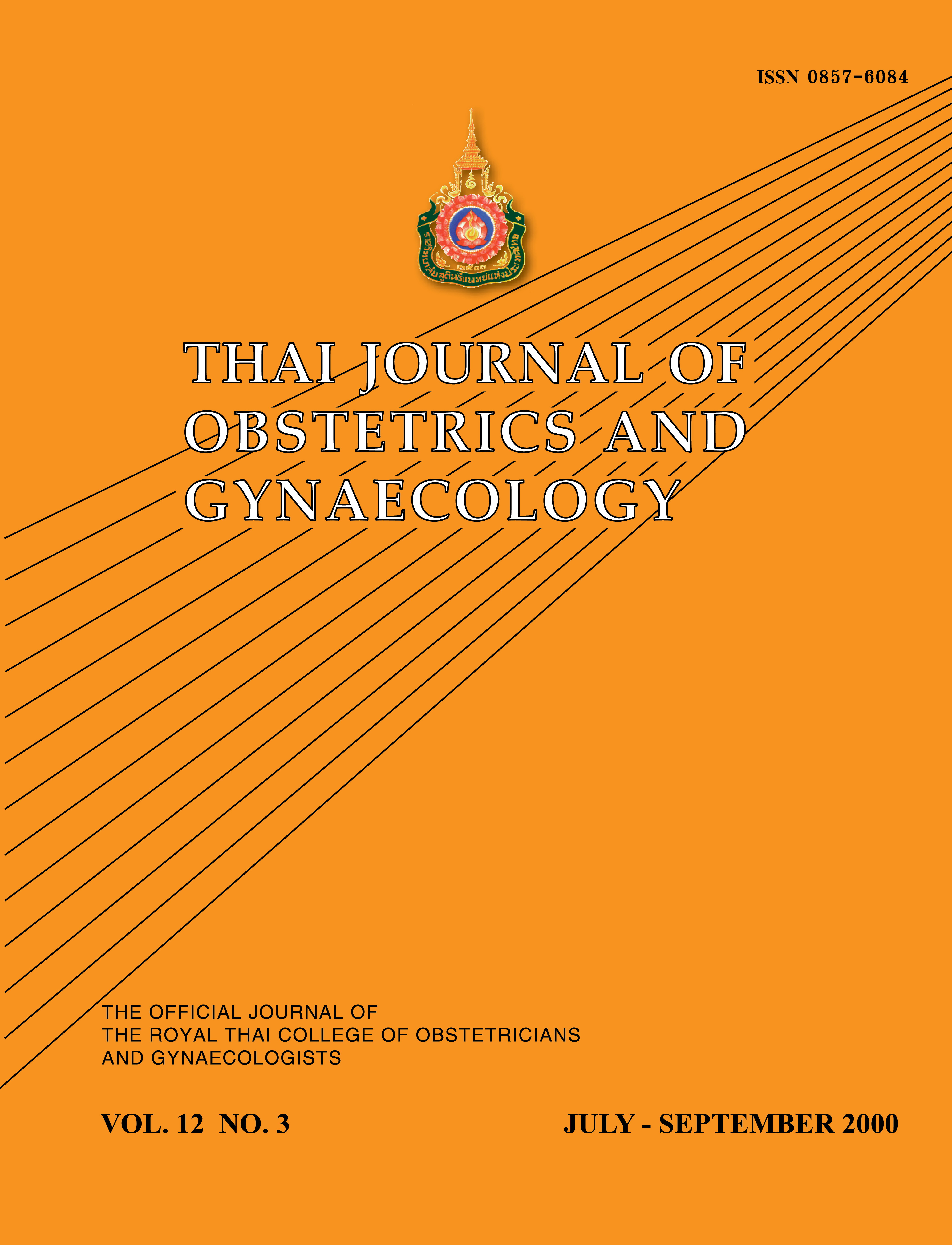Duplex Transvaginal Ultrasonographic Images of Gestational Trophoblastic Tumors in Clinical Practice
Main Article Content
Abstract
Objective To assess the special characteristic of intrauterine and adnexal lesions of Gestational Trophoblastic Tumors (GTT) visualized by Duplex Transvaginal Ultrasonography and the benefits and pitfalls of ultrasound images in clinical practice.
Subjects and methods Forty one GTT patients, classified as low, medium and high risk using WHO Scoring System for Gestational Trophoblastic Tumors, were examined by Duplex Transvaginal Ultrasonography prior to be administration of chemotherapy. The characteristic of lesions, tumoral blood flow and resistant index (RI) were recorded.
Result The intrauterine and adnexal lesions demonstrated by Duplex Transvaginal Ultrasonography had the unique patterns of the lesions and blood flows and could be used in making diagnosis in conjunction with human Chorionic Gonadotrophic hormone (hCG). However, intrauterine and adnexal lesions were unable to depict 10 in 25 patients in low risk cases and 2 in 13 high risk cases that had only few high impedance flows at peripheral parts of the lesions. There were no statistic differences in resistant indexes between low, medium and high risk.
Conclusion Duplex Transvaginal Ultrasonography is non-invasive and economic procedure. When it is used in conjunction with hCG, it effectively depicts the intrauterine and adnexal lesions of GTT, which is characterized by the prominence of low impedance flows and is very helpful in clinical staging and planning the treatment of GTT.
Article Details

This work is licensed under a Creative Commons Attribution-NonCommercial-NoDerivatives 4.0 International License.


